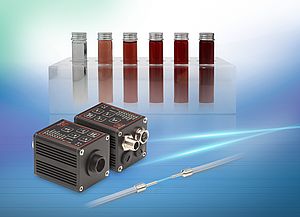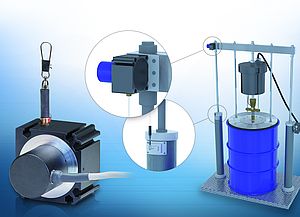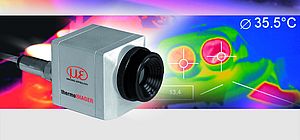Non-contact infrared temperature sensors are being used on a range of medium and high frequency induction heaters in order to measure the temperature of metal components during heat treatment
Part of the Ambrell Group, Cheltenham Induction Heating Ltd specialises in the design and manufacture of high, medium and low frequency induction heating equipment, including all associated handling equipment and fixtures for use in industrial, scientific and medical applications.
Over the past 12 months, Cheltenham Induction Heating has selected the thermoMETER CTM1/M2 infrared temperature sensor for use across its range of induction heaters.
The induction heaters vary in size from 1kW versions up to large, floor-standing 500kW heaters, with larger custom engineered systems available if required. These heaters are used by a number of industry sector customers, in applications where heat energy needs to be provided to a metal component or other magnetic material. Applications include annealing, bonding, brazing, hardening, melting of metals, degassing and coating.
Roger Grange, Projects Engineer at Cheltenham Induction Heating Ltd comments: “Often, our customers need to employ very specific heating cycles for different components that require heat treatment. So you need an induction heater that comes with the necessary controls and temperature measurement systems to enable easy integration with the customer’s process control system.”
“Basically, our heaters attain a specific temperature by controlling the amount of power they provide to the component in a given time period. This is normally a very repeatable process if the component is identical each time. However, if a customer requires the heater to maintain a constant temperature or set point, when the temperature needs to be held at a set level and not above this, the optical pyrometers enable us to achieve this,” he adds.
In early 2009, one of Cheltenham’s aerospace customers recommended it look at Micro-Epsilon as a possible supplier of infrared temperature sensors for induction heaters.
“As a machine builder, price is often a very sensitive issue for the customer. We found that Micro-Epsilon’s thermoMETER sensors were half the cost of our previous non-contact temperature sensors. The thermoMETER sensors also provide us with technical advantages. The sensor head, for example, is more compact than our previous sensor, which enables us to mount them in confined spaces on our heaters. In addition, the separate controller can now be mounted well away from the sensor head and from the induction heating coil, using a 2 or 3m cable provided. This makes the installation safer and less prone to any interference or overheating,” explains Roger Grange.
“We’ve also found that the Micro-Epsilon sensors are easily interchangeable with other sensor types. For example, we can very easily switch the output mode between 0-10V or simulate a K or J type thermocouple. It’s all very flexible and adaptable. The sensor is also capable of measuring temperatures from 250°C up to 1,600°C, which happens to cover most of our induction heater range.”
Mr. Grange continues: “The technical support, advice and guidance provided by Micro-Epsilon’s engineers has been excellent. When we first started working with Micro-Epsilon, the company very kindly loaned us an infrared temperature sensor for a two-week period so that we could test its suitability for integration with our heaters.”
Typically, the infrared temperature sensors are mounted next to the copper coil tubing, adjacent to the component that requires heating. The sensor is normally positioned at a distance of between 140mm and 300mm from the component, as long as the spot size remains small enough, otherwise your temperature measurement accuracy will suffer.”
The thermoMETER CTM1/2 sensors measure process temperatures from 250°C up to 1,600°C and so are ideal for use with metals, metal oxides, ceramics and composites. The sensors benefit from double precision laser sighting and a 40:1 or 75:1 optical resolution. Sensor response times are from 1ms. The sensor weighs just 40g and the controller 420g.
The sensor can be used in ambient temperatures of up to 100°C without any cooling required and has an automatic laser switch off at 50 deg C. The sensor measures at very short wavelengths (1.0-1.6 micrometers), minimizing temperature measurement errors on surfaces with either low or unknown emissivity.
A range of accessories and optional extras are available for the CTM1/M2 range, which protect the sensor in harsh operating environments. These include air purging accessories, K or J type thermocouples outputs and a range of integrated digital communications interfaces, including Profibus DP, CAN open, USB, RS232, RS485 and Ethernet.
Edited by: Constanze Schmitz
Infrared temperature sensors
used in induction heaters
- by Micro-Epsilon Messtechnik GmbH & Co.KG
- August 31, 2010
- 285 views




























